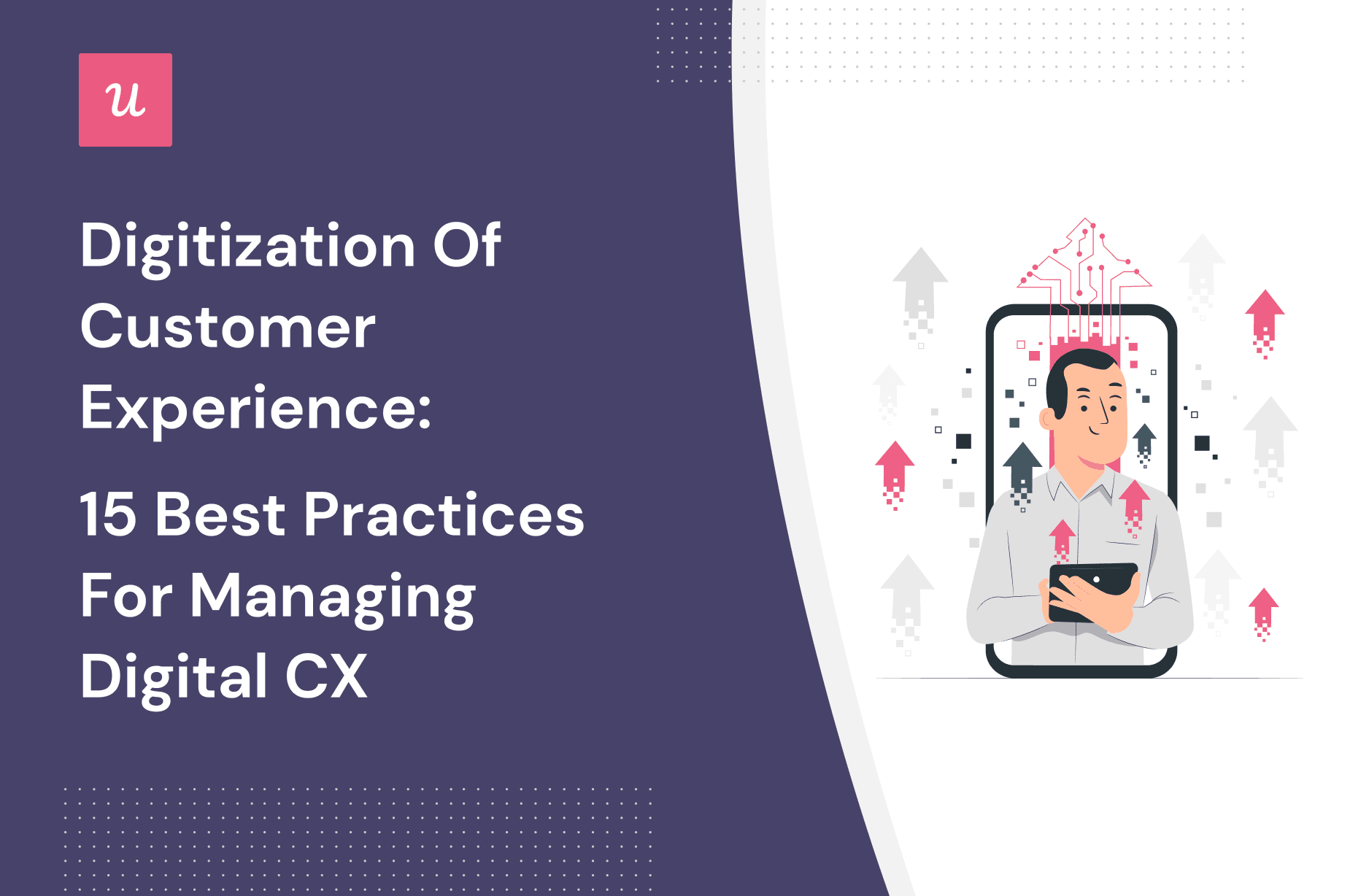
Digitization of Customer Experience: 15 Best Practices For Managing Digital CX
In this new era, digital transformation and the digitization of customer experience are a must for most businesses.
In this article, we’ll cover:
- What digital customer experience (digital CX) is and how it compares to regular CX?
- The benefits of digitizing your customer experience, including its effect on revenue.
- 15+ strategies to offer seamless digital customer experiences and drive retention for your SaaS.
Try Userpilot Now
See Why 1,000+ Teams Choose Userpilot

TLDR;
- The digitization of customer experiences involves transitioning all or part of the customer journey to the online world.
- Digital customer experience references the part of the journey that’s experienced virtually in digital channels, such as mobile app experiences, website browsing, social media interactions, etc. It’s the sum of a customer’s digital interactions with your brand.
- On the other hand, customer experience as a whole refers to all customer encounters, both online and offline.
- Good digital CX is important for businesses because it increases customer satisfaction, drives retention and brand loyalty, and sparks growth through word-of-mouth marketing.
- To improve digital CX, start by offering an omnichannel customer experience, where data is synced across multiple channels and customers can enjoy a connected experience no matter where they are.
- Create user personas to better understand your customer segments. That way, you can improve their digital CX by personalizing in-app experiences for their specific use cases.
- Map out your entire customer journey to visualize every touchpoint and recognize areas for improvement.
- Monitor your in-app user analytics for a direct view of what features are well-loved and which ones are neglected. You can then use this data to prioritize product improvements.
- One of those improvements could be better in-app guidance. Offer contextual help with tooltips, modals, and checklists that guide users on how to achieve value with your product.
- Also, offer in-person training and webinars to connect with customers on a human level. That way, they can also see how it’s done, rather than just read about it.
- Humanize your digital customer experiences with emotional design. For example, if something goes wrong and an error page is displayed, spruce up that page with fun graphics to keep spirits high.
- In the same vein, celebrate successes and milestones with UI elements such as certificates, badges, and happy characters.
- Collect customer feedback and monitor user satisfaction metrics, such as the customer effort score and NPS to keep an eye on where things stand. Improve the quality of that feedback by incorporating qualitative surveys on top of your quantitative data to expand on what customers are thinking and feeling.
- Implement loyalty programs, such as referral or mission-based programs, to build stronger customer relationships. If rewarded for getting involved, they’re more likely to stick around longer and talk positively about your product.
- Offer multiple formats for support to cater to everyone’s preferences, including a self-service resource center and live chat.
- Make digital CX a priority right until the very end – when customers churn. Improve the cancellation process so customers leave with a positive mind state, increasing their chances of returning.
What is the digitization of customer experience?
Digitization of customer experiences is the migration of existing processes, tools, and offerings to an online medium as well as the creation of new processes, tools, and offerings that utilize cutting-edge technology.
What is digital customer experience?
Digital customer experience is a term that includes all of the encounters that a customer has with your brand online using digital technology. Whether they’re browsing your website, using your app, or speaking to customer service by email, these all encompass digital CX.
Digital customer experience vs. customer experience
The customer experience (CX) applies to the entire customer experience, both physical and virtual. It covers every interaction that your customer has with your business, regardless of where it’s happening.
On the other hand, digital customer experience (DCX) only refers to the customer’s experience of your brand in virtual spaces or digital channels, such as in mobile apps, social media channels, and your product dashboard. It’s a narrower definition of CX that’s limited to the customer’s online experience.
Why is digital CX important for business?
Customer experience is becoming an increasingly strategic part of any company’s brand as businesses become more customer-centric. Statistics show that CX is becoming more important than price and the product itself.
Optimizing for digital CX contributes to increased satisfaction, higher retention and loyalty, and faster growth through word-of-mouth marketing.
Increased customer satisfaction
An excellent customer experience involves a mix of limited friction, minimal effort and high success. They all lead to higher satisfaction.
Exceed your customer’s expectations by maximizing those three factors and your customer satisfaction will naturally improve.
Good customer experiences drive retention and loyalty
High satisfaction then leads to increased loyalty. Customers stick around for longer and avoid looking for alternatives. This drives product and customer stickiness, increasing your customer lifetime value and overall revenue.
Growth through better word-of-mouth marketing
Loyal and happy customers will share the love and recommend your business, speaking highly of you. We all like to brag about our good decisions. When we like using a product, it makes us feel like we made a good decision and we want to talk about it.
Digital customer experience management best practices
Here are 15 proven ways and strategies to improve your digital customer experience.
Create an omnichannel customer experience
Omni-channel experiences give customers the option to communicate with your team in a way that suits them. Some people enjoy a self-service experience, whereas others want to chat with someone live. Customer experience improves when people can interact with your brand in their preferred way.
What differentiates multi-channel vs. omnichannel experiences is the presence of data syncing and continuity with the latter.
Omnichannel ensures that the conversation continues when customers jump from one medium to the next. Keep tabs on the experiences your customers are having with your product, and start where they left off next time they come back. This delights customers with a seamless and enjoyable experience.
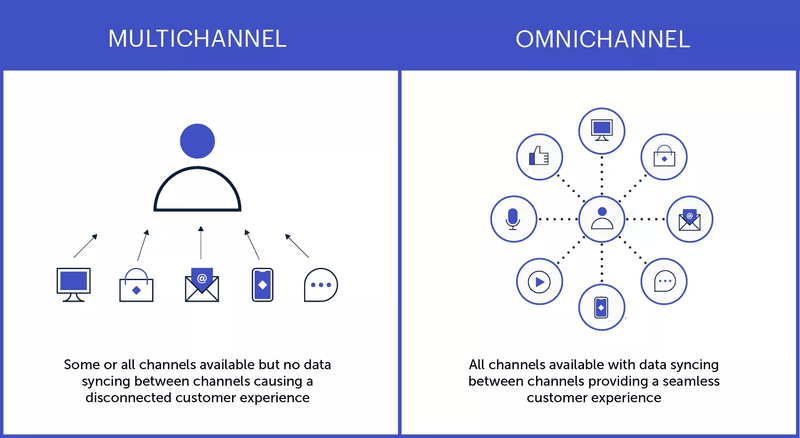
Know your audience and determine their jobs to be done
Before you can create a digital experience that your customers will love, you have to know who they are and what goal they’re trying to achieve with your app.
Create user personas to understand your audience better and tailor your digital CX strategy to meet their needs.
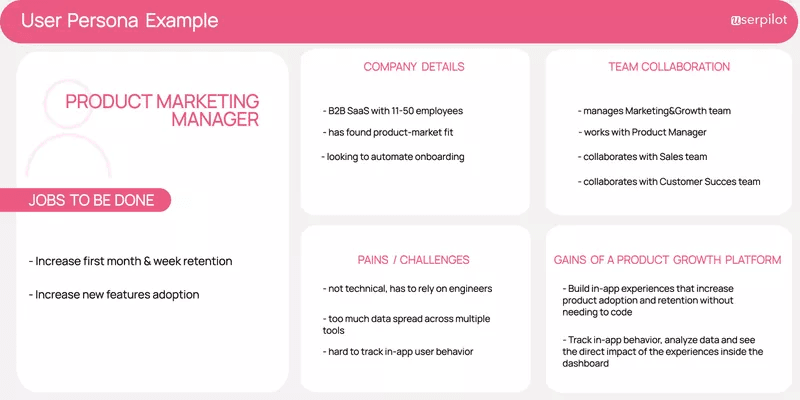
Collect customer data at the beginning of the onboarding process with welcome flows so you can better personalize the rest of their digital customer journey and offer relevant content.
Easily create these in-app microsurveys to collect this data using Userpilot’s drag-and-drop flow builder.
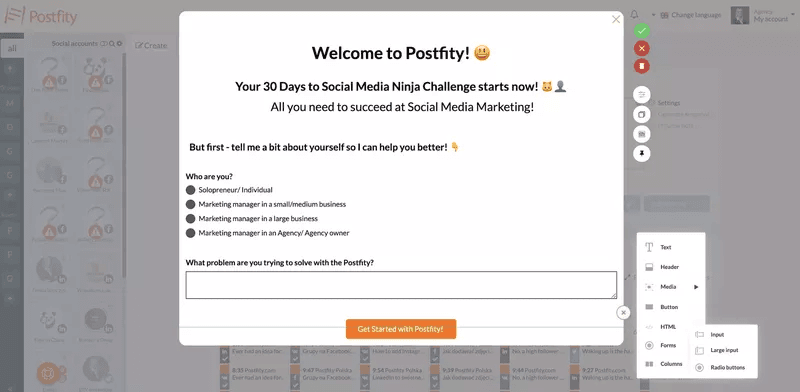
Personalize digital customer experiences based on users’ needs
Not only can personalized customer experiences increase income and loyalty, but they’re also becoming more expected by consumers.
According to Salesforce research, 66% of consumers expect companies to understand their unique needs and expectations, and 52% expect all offers to be personalized.
This goes beyond addressing them by their name. Different user personas are interested in different parts of your app. Value and success will look different for them. Segment them based on their jobs to be done and personalize the product experience by offering small tips, hints, and help based on what’s relevant to the user.
Another way to tailor product experience: build segments based on product usage, and in-app behavior. This way, you’ll make sure you prompt users to discover advanced features only after they’ve adopted the core ones that will deliver assured value.
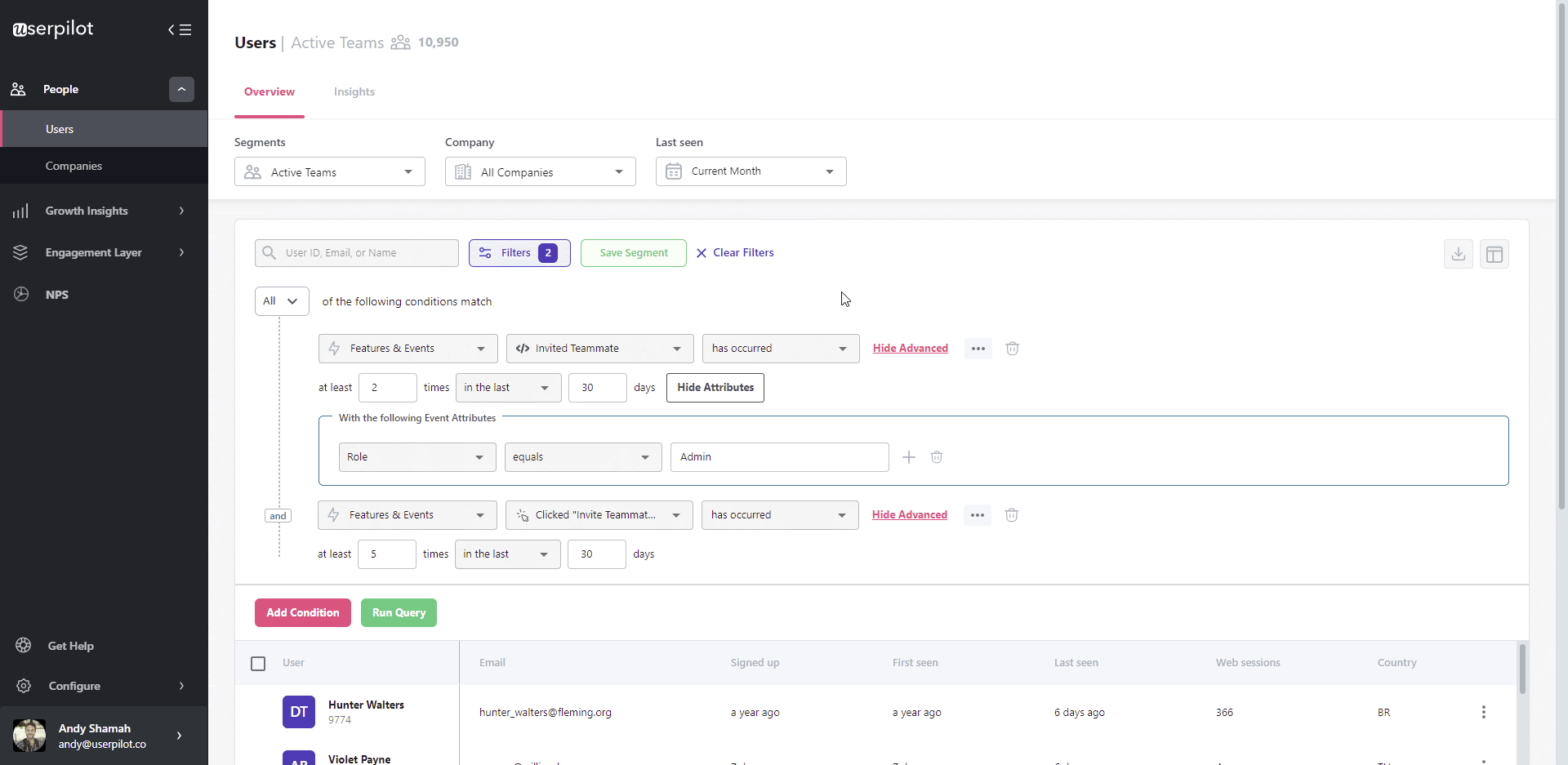
In this example of personalization in Notion, they use a branched onboarding process to reduce time to value. Depending on your use case, Notion will guide you through the product, prioritizing the features that will be most beneficial for your use case.
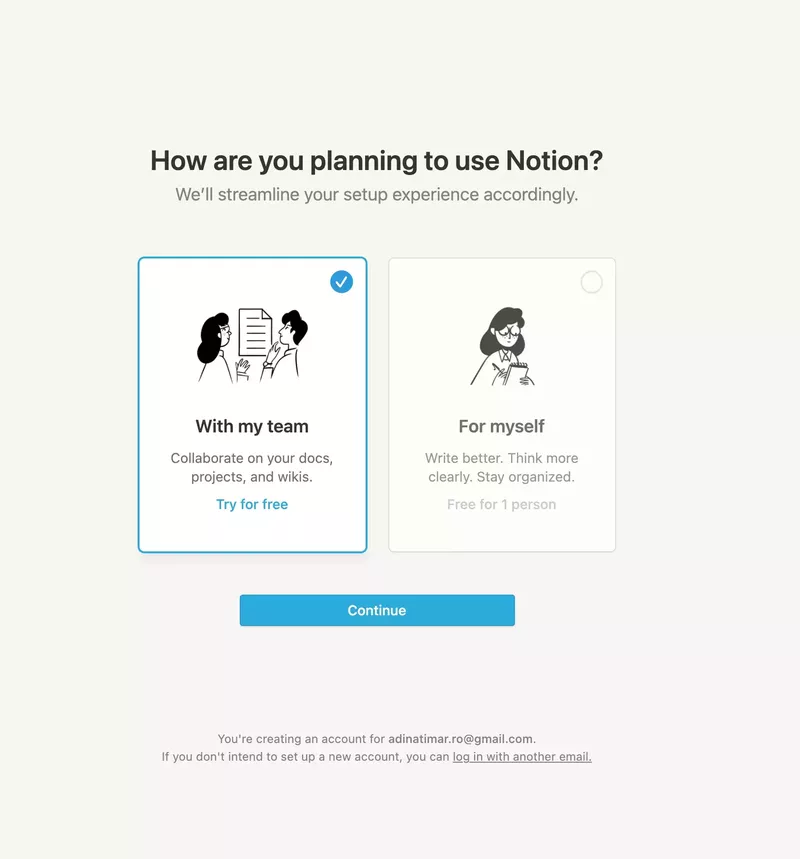
Map the customer journey and list all the important digital touchpoints
To improve experiences in your digital channels, you need to first understand what those digital experiences are.
Start by mapping out the entire journey to get a visual representation of how personas move through a range of digital experiences. Look for actual points of failure, as well as areas of unusually high effort, inconsistent messaging, or confusing options.
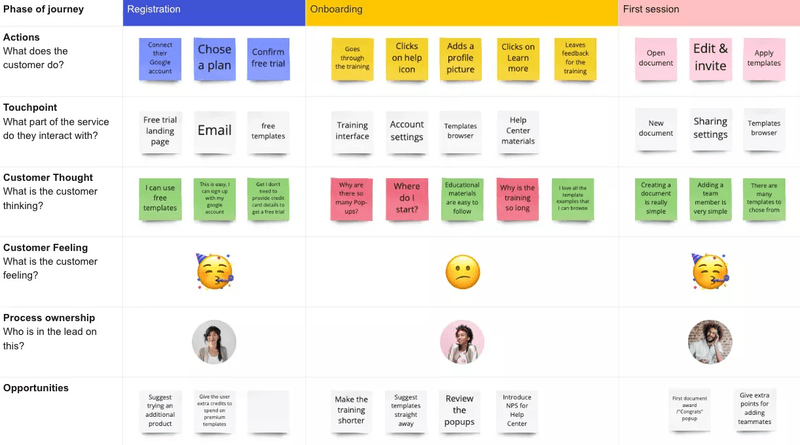
Track in-app user behavior to identify friction points across the digital CX
Tracking in-app behavior analytics will give you a clear view of areas to prioritize in your digital CX strategy. One way to get insights into users’ behavior is to set in-app goals and milestones. This will enable you to see where users encounter problems or drop off.
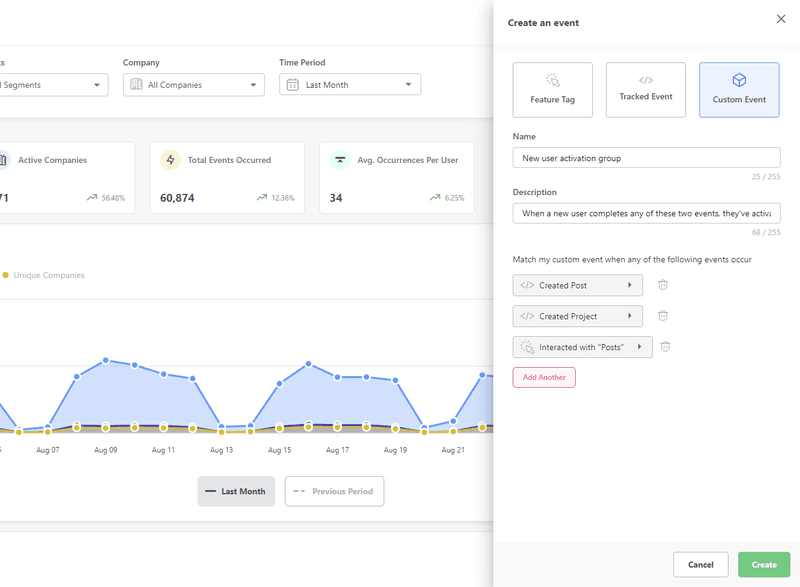
Provide contextual in-app guidance and help users experience value
Once you’ve identified friction points or the user segments that are not getting enough functionality from the product, use in-app guidance like tooltips, modals, or checklists to direct them to discover features.
Then they can take the next step in engaging with your product and learn how to get value from using it.
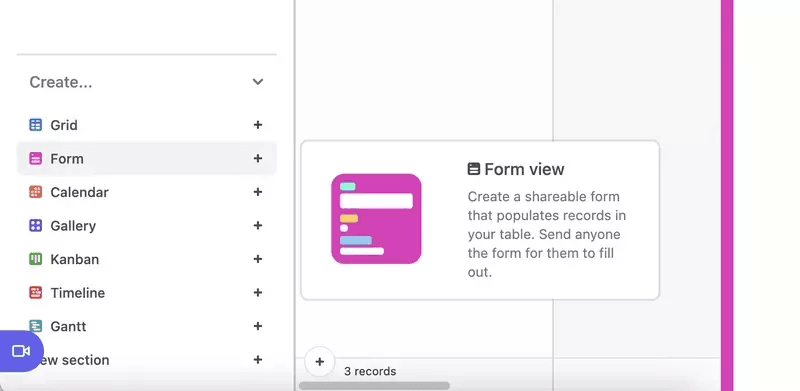
Improve digital CX with user interface feedback
User interface (UI) feedback refers to how your product UI is designed to respond, and the type of output it generates based on how users interact with it.
Provide a positive experience by making sure users don’t encounter friction. For example, incorporating feedback error messages in your signup forms can reduce friction and increase conversions.
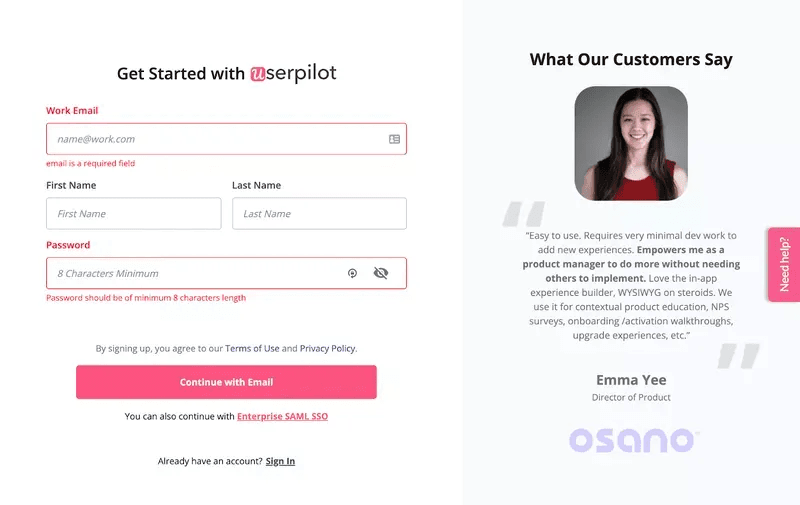
Offer in-person training and support with webinars
In-person training, webinars, and videos add a personal human touch to your customer experience because customers can not only connect with a real person but also see how to use your product, rather than read about it.
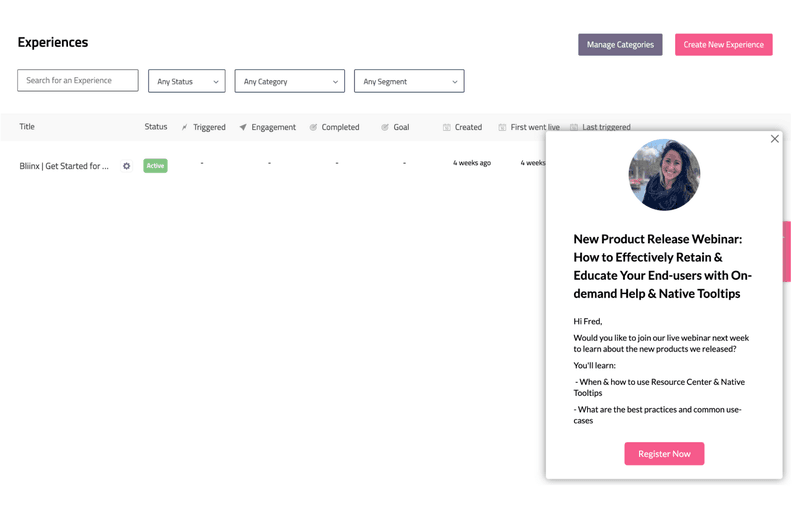
Humanize digital customer experience with emotional design
Create an exceptional customer experience and improve customer satisfaction by adding personality to your brand and sparking positive emotions while they are using your product.
Take it from Asana. Even when things go wrong in the digital customer experience journey and you need to display an error page, like in the example below, you can lean on emotional design to lessen the blow with happy animations. While it won’t fix the error, it lightens the mood.
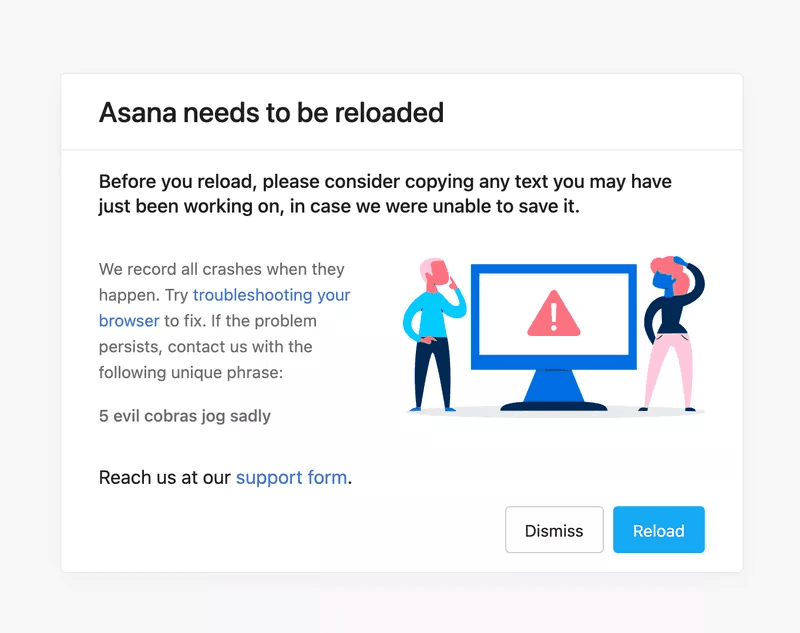
Collect qualitative feedback and take action to improve digital customer experiences
Collecting qualitative feedback with surveys can help you find pain points like navigation issues or obstacles to conversion. It’s also an opportunity to show customers that you genuinely care by acting on that feedback or responding directly to negative feedback.
Relying on only quantitative insights won’t paint a complete picture. You also need to ask open-ended questions and gather qualitative customer feedback on your digital customer experience.
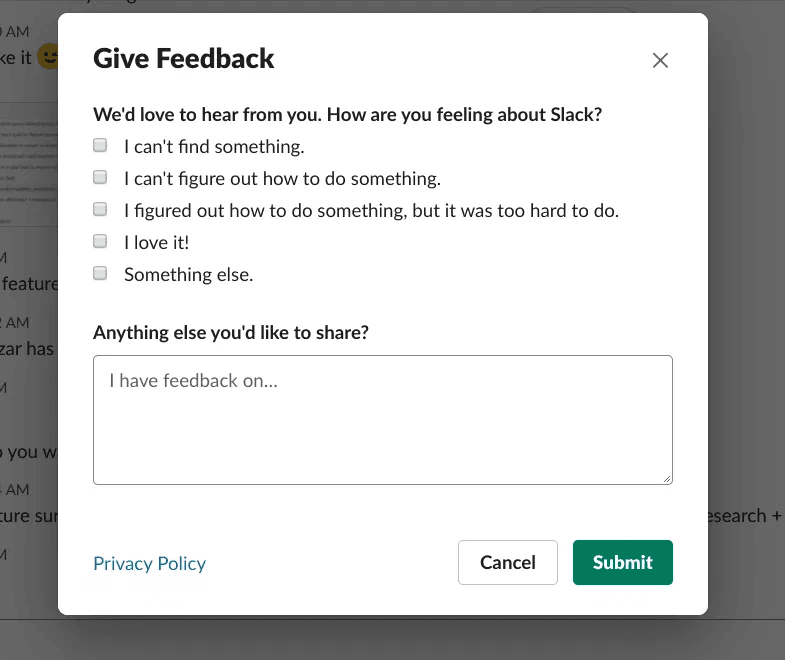
Make it easier for customers to give feedback by offering passive feedback options. That way, they can give feedback whenever they feel like it, adding less disruption to their product experience.
In this example, Miro has added a subtle passive feedback survey to their UI. It doesn’t interfere with the task at hand and it’s optional for its users to respond.
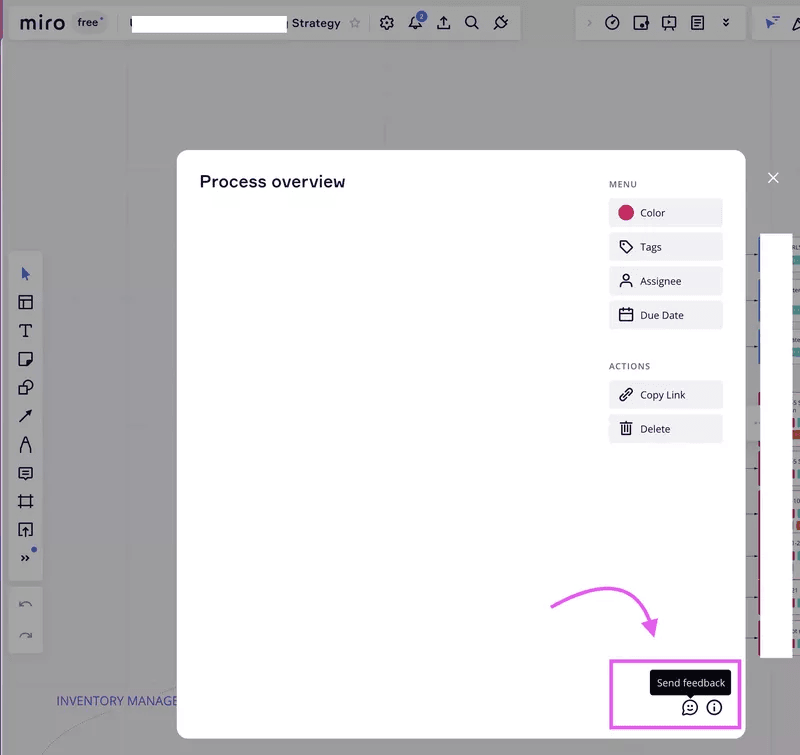
After you’ve collected and sorted the feedback, improve your product and UX based on what you learned to deliver great digital customer experiences.
Don’t forget to follow up with those who left feedback to close the loop and show them that their opinion is valued.
Implement loyalty programs and build stronger relationships with customers
Loyalty programs help to build stronger relationships with customers, since receiving a reward is an exciting, affirming experience.
There are many different types of customer loyalty programs that you can try. Some include:
- Point-based programs are based on purchases or product usage.
- Referral or affiliate programs are based on getting new customers to try out the product.
- Mission-driven programs are based on donating to causes that are important to customers.
In this example from Evernote, they have a points-based referral program that encourages customers to invite their friends to use Evernote. In exchange, they get points that convert into subscription credits so they can save money on their plans.
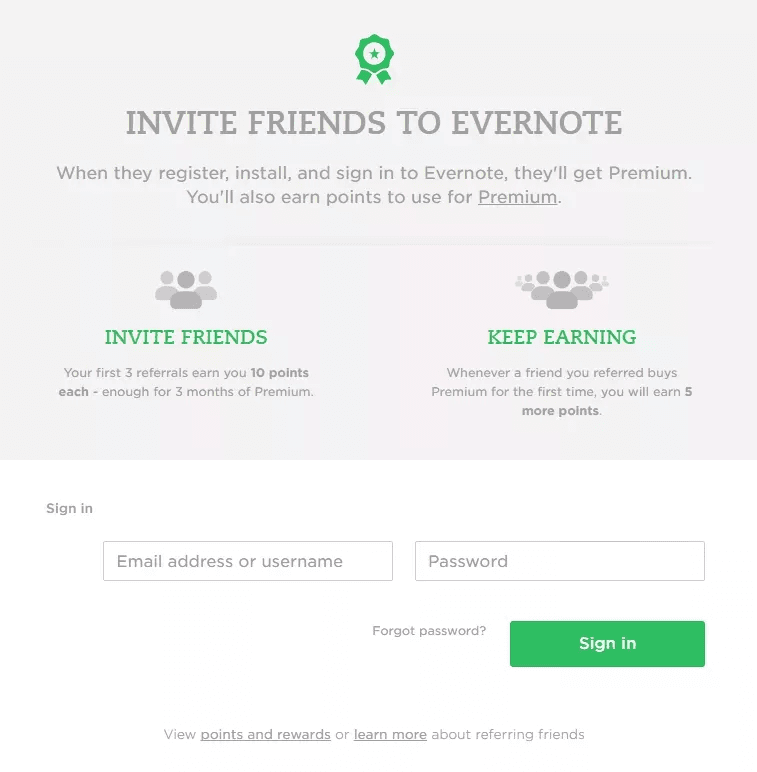
Offer self-service support options to simplify the customer service experience
Most Gen Z and millennials report that they prefer self-serve options over speaking to live agents, according to Zendesk’s recent study.
What type of self-service support should you offer?
An in-app help center works best for fast and reliable support that’s available 24/7. Having on-demand help reduce friction and improves user satisfaction since customers don’t have to wait around for a response to their questions.
In your self-service resource center, you should offer a variety of content types to cater to everyone’s learning style. Include video tutorials, written guides, direct access to support from inside the app, and other forms of on-demand resources.
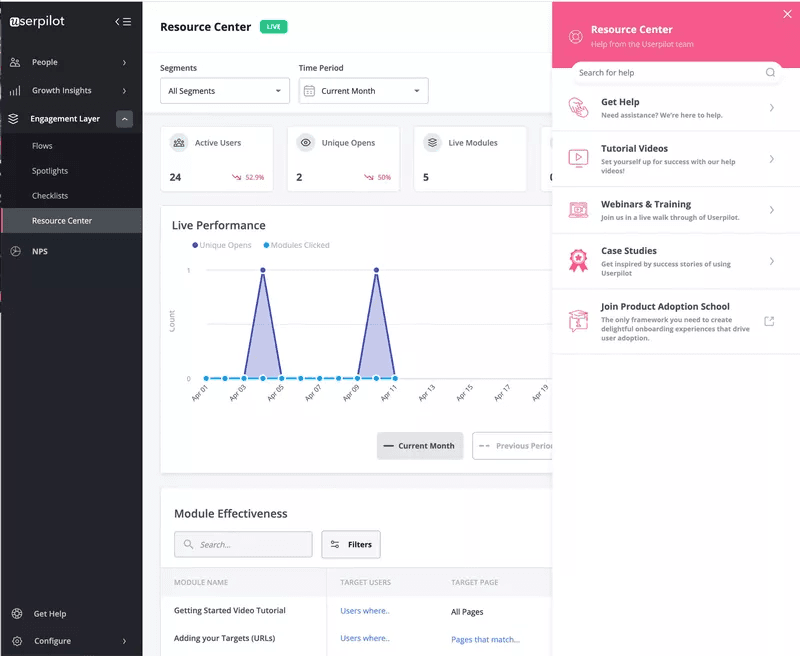
Adopt live chat as part of your digital customer experience strategy
While some customers prefer self-service, others would rather speak to a live agent.
Not only are they beneficial for providing instant help to customers in a personal format, but they’re also great for data collection. You can monitor chat conversations and recognize patterns in the questions asked.
Are there specific features that customers have the most trouble with? You can prioritize those fixes based on what you learned in the chat conversations.
Celebrate success and make sure customers feel appreciated
We tend to repeat actions that drove us to success. Celebrating customer milestones increases dopamine levels, boosting moods and making customers feel special.
This positive emotional state motivates them to keep pushing forward, in hopes that they can keep celebrating their success along the way.
To celebrate success and make customers feel appreciated, use gamification elements such as badges, certificates, and happy characters to keep spirits and motivation high.
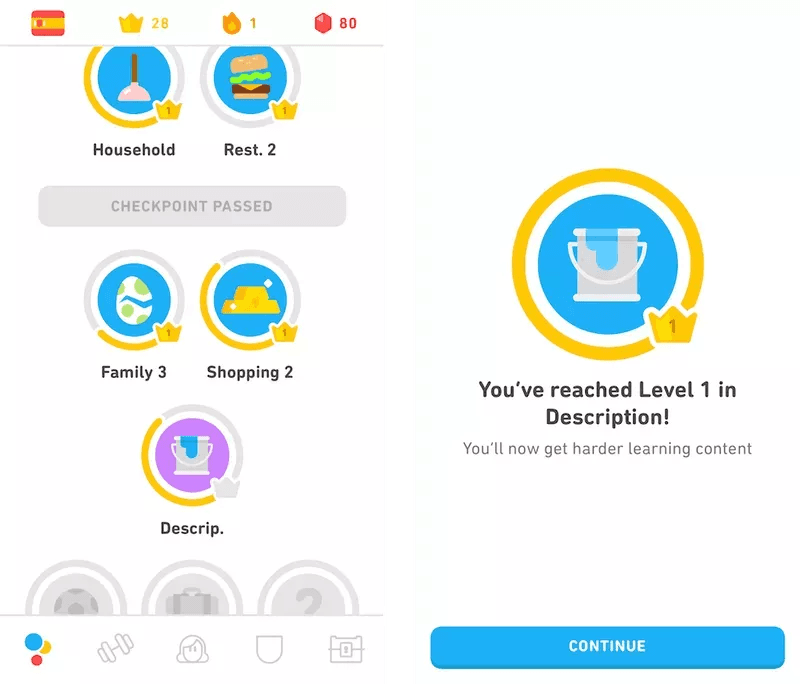
Make customer experiences memorable even when users churn
All hope isn’t lost when users churn. If the memory of their positive experience lingers, they may come back to your business when they need it again.
Ask what went wrong, offer alternatives, and most of all, don’t make it hard for them to cancel. Instead, use the opportunity to learn and improve so they leave with a positive state of mind.
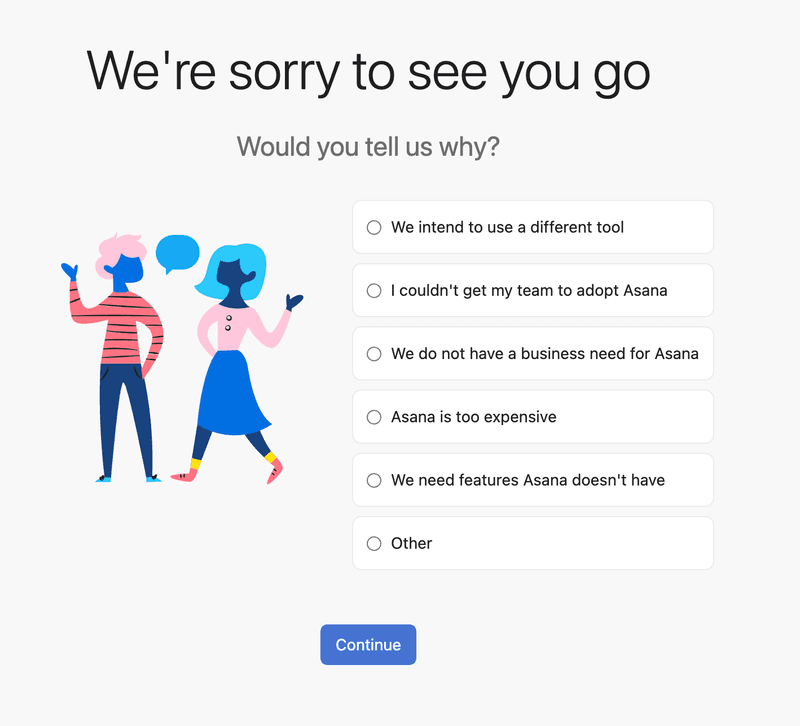
How can Userpilot help you to deliver seamless digital customer experiences?
Userpilot is a code-free digital adoption and onboarding platform for SaaS companies.
It enables you to create and deliver in-app product experiences tailored to specific use cases at each stage of the digital customer experience journey.
You can build flows with multiple UI patterns, such as modals, slideouts, banners, tooltips, hotspots, and checklists.
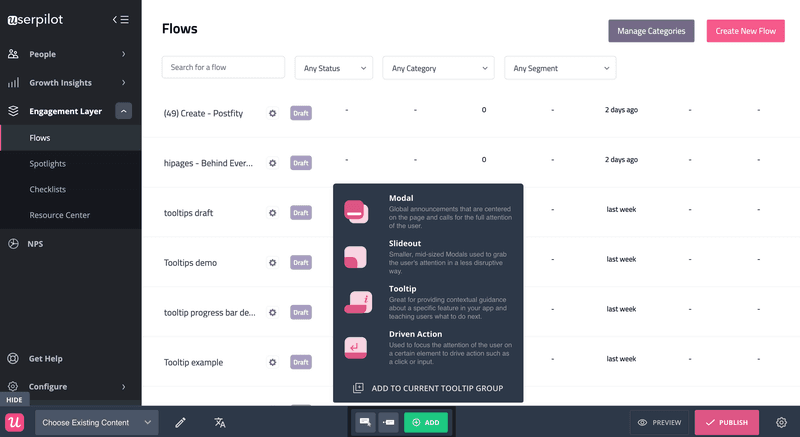
Leveraging its mobile SDK features, Userpilot also allows you to onboard and engage mobile app users by creating personalized messaging, push notifications, and surveys.
You can also A/B test your in-app experiences to measure performance and ensure you’re putting forward the best possible customer experience.
Not only that, you can use Userpilot to gather customer feedback across multiple digital touchpoints with in-app microsurveys and analyze it.
For example, you can run NPS surveys and then tag responses to make sense of the data instantly. Then, you can go to work on improving those experiences based on your findings.
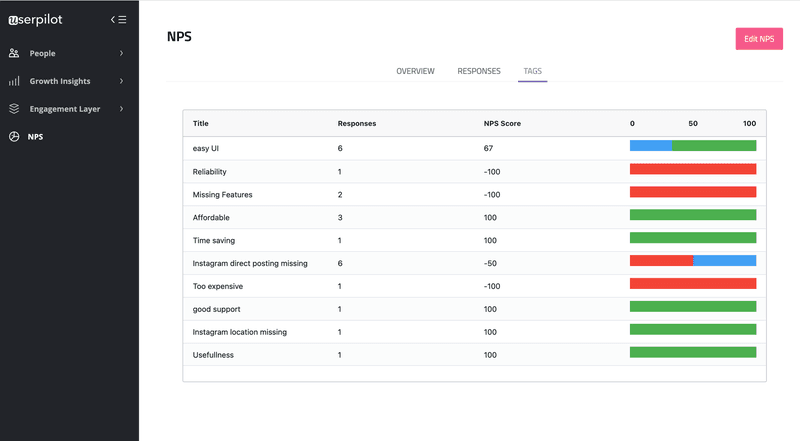
Conclusion
Prioritizing your digital customer experience strategy will engage customers, increase customer loyalty, and help you deliver personalized experiences that make an impact.
Want to get started with the digitization of customer experience?Get a Userpilot Demo and our team will be happy to walk you though it?






